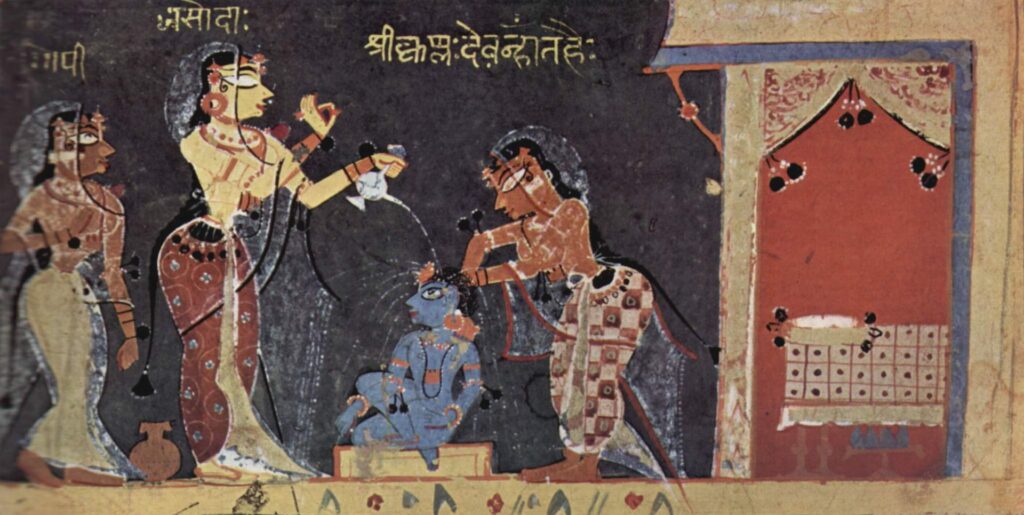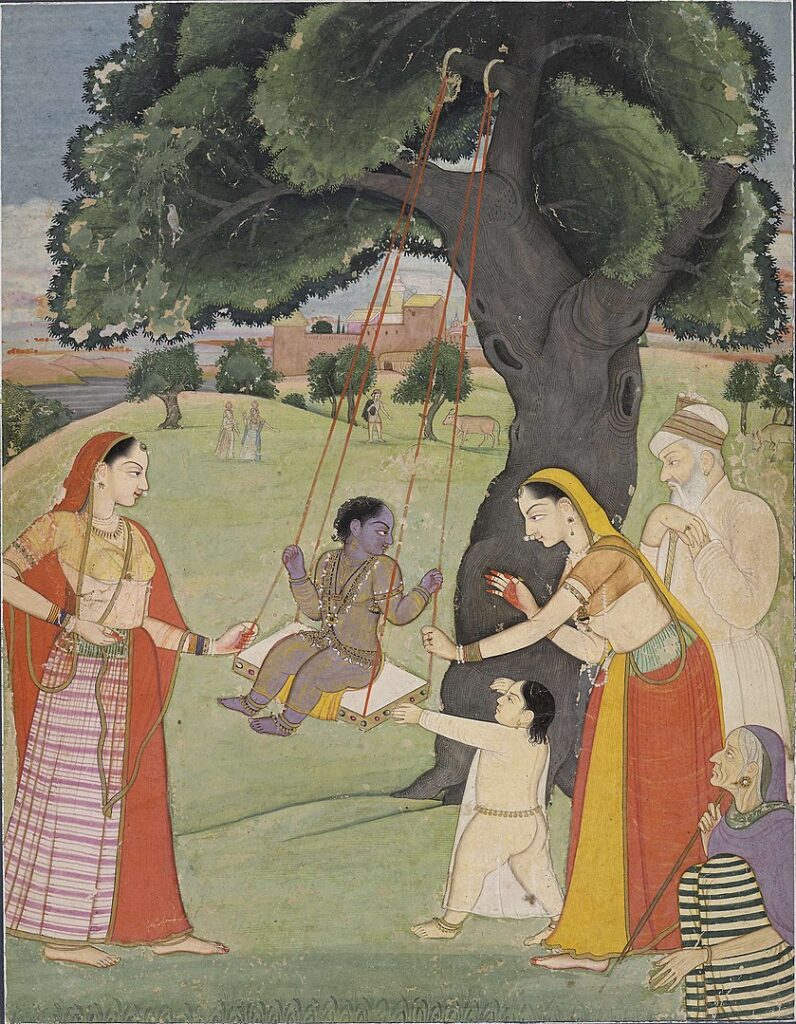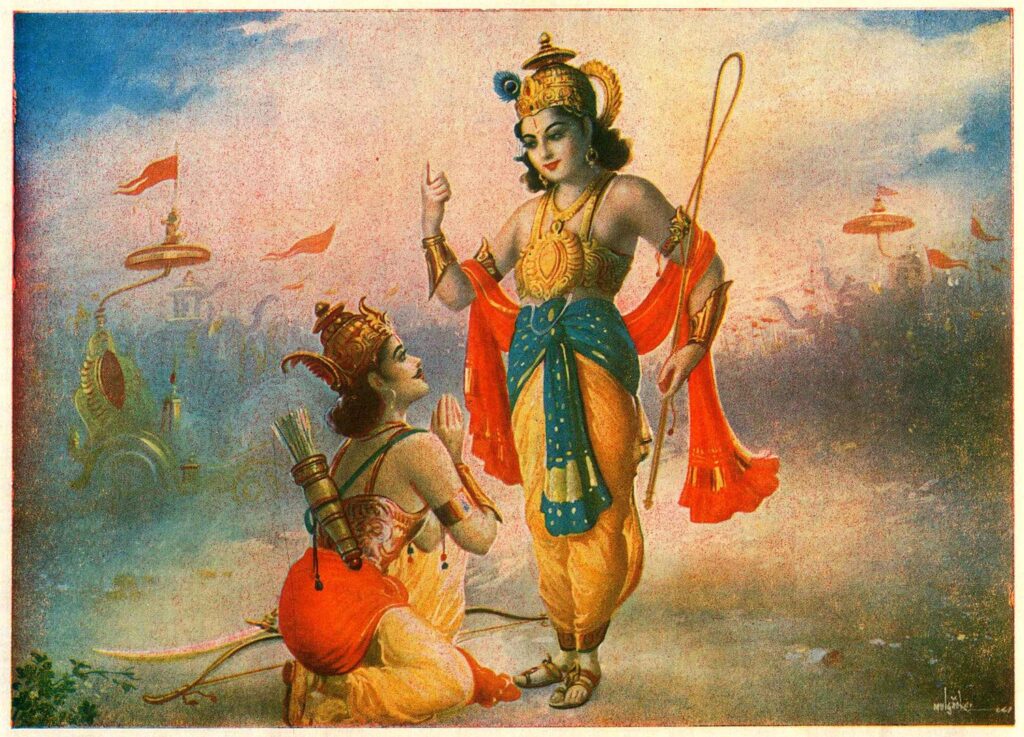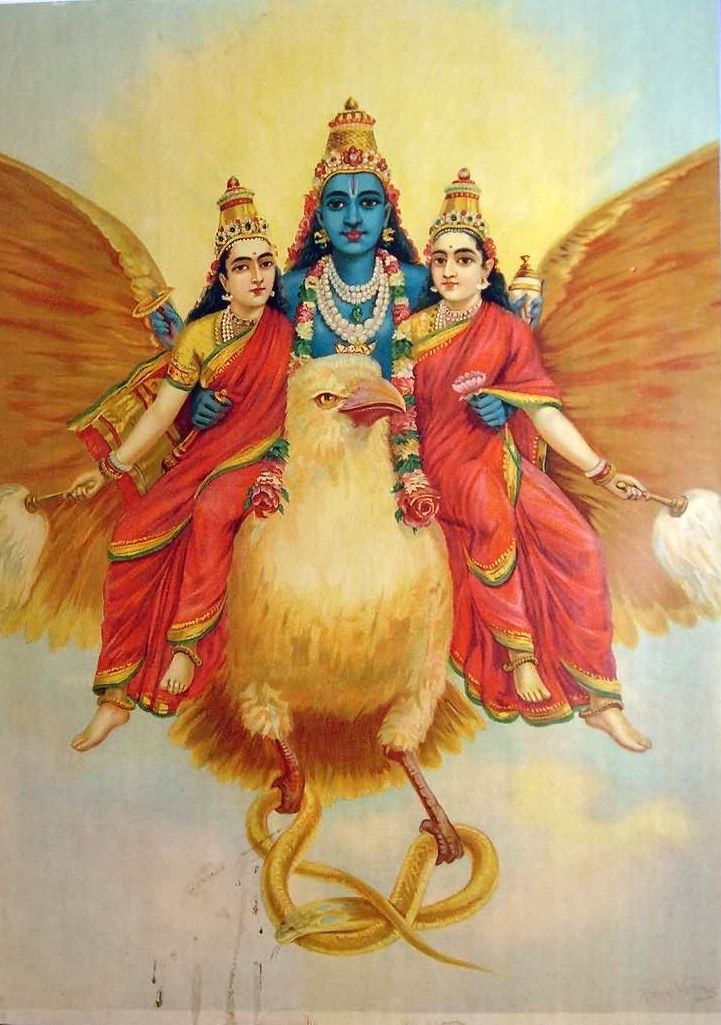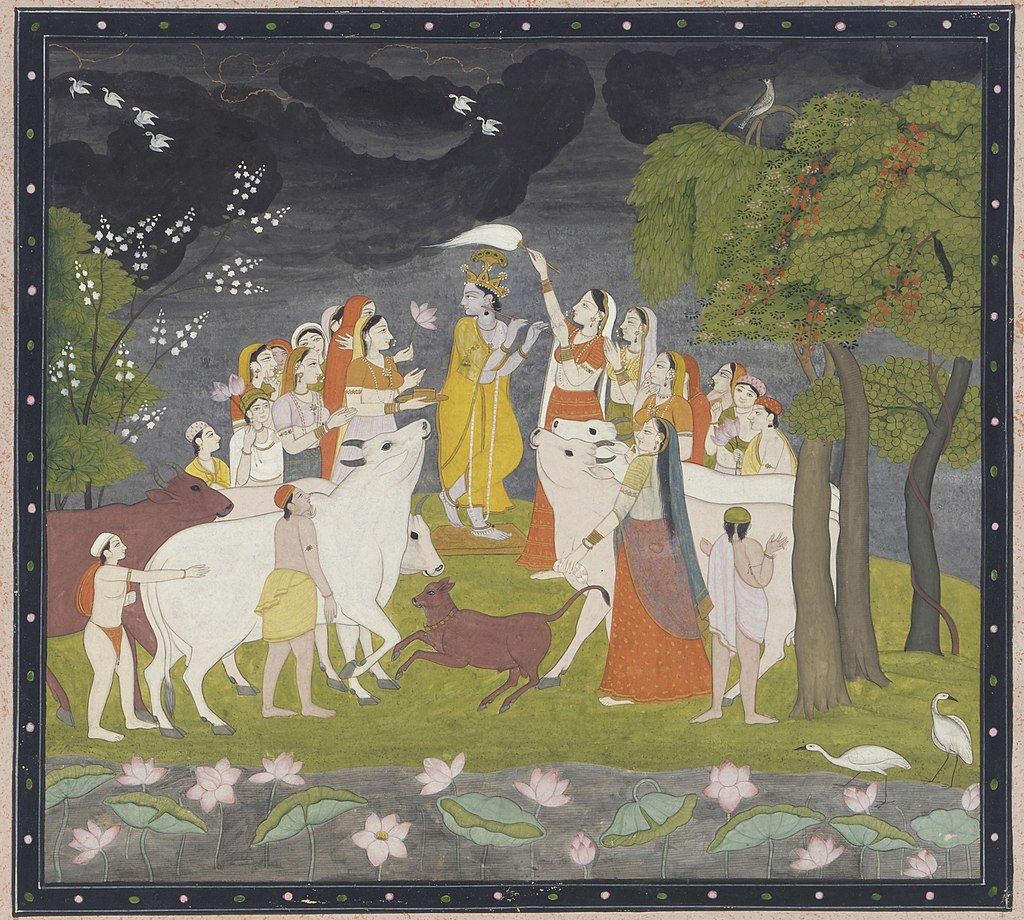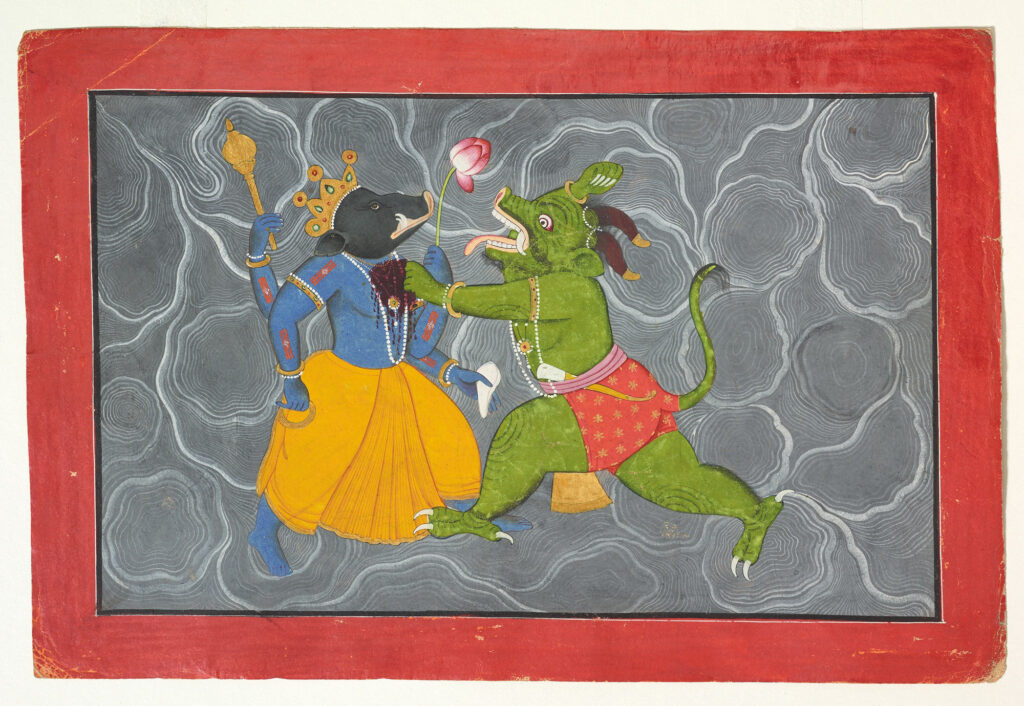
Varaha avatar is the third incarnation of Lord Vishnu. The word Varaha means boar. Lord Vishnu incarnated as a Varaha (boar) to protect the earth (Prithvi) which had sunk to the depths of the Garbhodaka ocean. Varaha avatar is known as the slayer of the demon Hiranyaksha, who had dragged the earth to the bottom of the sea.
The four Kumaras Sanaka, Sanatana, Sanandana, and Sanat Kumara, once visited Vaikuntha by dint of their mystic prowess and thereby perceived exceptional bliss. After passing through the six entrances of Vaikuntha Puri, they discovered two guards, Jaya and Vijaya, outside the seventh gate. These guards were wearing fresh garlands and were armed with maces. They were adorned with jewelry, earrings, helmets, garlands, etc. The four sages, although the oldest of living creatures, appeared just like five-year-olds. They wore no clothes and covered their bodies only with the atmosphere. When the guards noticed the four Kumaras, they stopped them from proceeding further. This enraged the sages, whose eyes turned red due to their eagerness to meet with Sri Hari, the supreme Lord. The sages concluded that these guards should be cursed as they held the mentality of the material world where living entities had three kinds of enemies. But such a mentality was misplaced in Vaikuntha, which was devoid of any disharmony. The guards repented for their actions, but the sages cursed the guards, Jaya and Vijaya, to be born in the material world.
When the Supreme Lord Narayana, became aware of the situation, He came over to the spot with Lakshmi, His wife. On beholding the beautiful form of the Lord, the four Kumaras sang His praises and considered their lives successful. Lord Hari glorified the brahmanas identifying them as His own body. The Kumaras surrendered unto the Supreme Lord and awaited His instructions on the matter. Lord Hari remarked that though Jaya and Vijaya were cursed by the sages, the action was actually ordained by Him. They would soon be taking birth in a demoniac family, where they would possess a nature inimical to the Lord. In this way, they would be firmly united with the Supreme Lord through mental concentration intensified by anger. And before long, they would return to Vaikuntha again. The sages circumambulated and offered their obeisances unto the Supreme Lord, before departing.
